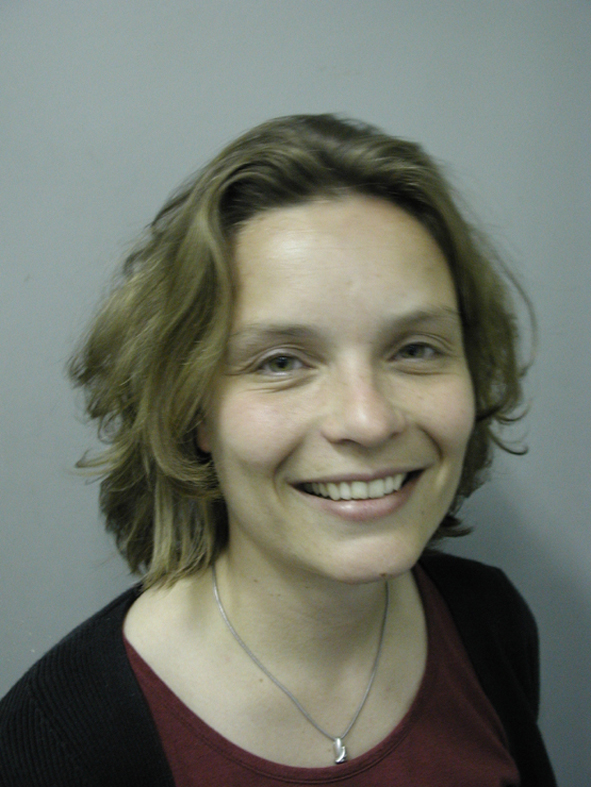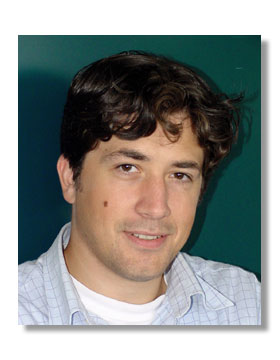Coordinator: Professor A. J. Kirby, F.R.S. University of Cambridge
ENDEVAN (European Network on the Development of Artificial
Nucleases) was set up in March 2000 by the European Commission
under the Research
Training Networks activity of the Human Potential Programme
of FRAMEWORK V and ran until 29 February 2004.
It brought together seven leading research groups from six European
countries in a coordinated interdisciplinary programme, firmly
based in Chemistry, aimed at producing new, synthetic catalysts
to mimic selected classes of nuclease enzymes.
Objectives
The long-term objective is the development of man-made catalysts
for the site-specific cleavage of polynucleotides (specifically
the nucleic acids, RNA and DNA). The strategy is to develop efficient
catalytic units and attach them to a series of systems, including
antisense oligonucleotides, known to bind to target oligo and
polynucleotide systems, and to screen them for their ability to
catalyse the cleavage of internucleotidic bonds. Artificial nucleases
are potentially valuable therapeutic agents, allowing in principle
the regulation of the expression of a single gene.
Programme
This is very much interdisciplinary science, needing serious
input from chemists of several sorts - structural, synthetic,
bioorganic - as well as biochemists and chemical geneticists.
All our members work to some extent across these boundaries already,
and are involved in informal collaborations with each other and
with groups in adjacent areas.
All groups, and all participants are involved in the design of
new systems, each contributing their special expertise.
Principal Scientists
Cambridge group Professor A. J. Kirby, F. R. S GB University of Cambridge Padova group Professor Paolo Scrimin IT Universitá di Padova Frankfurt group Professor Dr. Michael Goebel DE Johann Wolfgang Goethe-Universität Frankfurt am Main Linköping group Professor Lars Baltzer SE Linköping University Leiden group Professor J. H. van Boom NL Leiden Institute of Chemistry Bern group Professor Christian Leumann CH University of Bern Karolinska group Professor Roger Strömberg
Dr. Esther YehieleskySE Karolinska Institutet, Stockholm
Details and Groups.
|
Contact: Prof. A. J. Kirby University Chemical Laboratory, Cambridge CB2 1EW, UK Tel: +44 1223 336370 FAX: +44 1223 336913 e-mail: ajk1@cam.ac.uk |
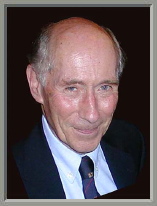 |
The Cambridge group is interested in all aspects of organic reaction mechanism in solution, in the general context of mechanism and efficiency in enzyme catalysis. The approach is chemical, and aimed at a firm understanding based on results from systems simple enough to understand in detail (and to synthesise without too much trouble). We want to apply this understanding to design and synthesise systems which can reproduce both the high rates and the stereospecificity of enzyme reactions. We are involved in different ways of developing artificial catalysts which are potentially relevant to anything from academic theory to gene therapy (Prof. Kirby also Coordinates the ENGEMS Network web site www.ch.cam.ac.uk/misc/ENGEMS/). We will know that we really understand enzymes when we can reproduce their properties - especially their efficiency - in artificial catalysts.
Recent publications
1. Enzyme Mechanisms, Models and Mimics. A. J. Kirby, Angew.
Chem., Intl. Ed. Engl., 1996, 35, 707-724 (Updated
in "Stimulating Concepts in Chemistry" Shibasaki, Stoddart
and Vögtle, Wiley-VCH, 2000, (in the press).
2. Mechanisms of Catalysis by Imidazole Buffers of the Hydrolysis
and Isomerisation of RNA Models. C. Beckmann, A. J. Kirby, S.
Kuusela and D. C. Tickle, J. Chem. Soc., Perkin Trans. 2,
1998, 573-582.
3. Nucleophilic Attack on Phosphate Monoester Dianions by Oxyanions: the Positive
Effect of a Cationic General Acid. A. J. Kirby; M. F. Lima; D. da Silva; F. Nome,
J. Am. Chem. Soc., 2004, 126, 1350-1351.
Web site: http://www.ch.cam.ac.uk/staff/ajk.html
Padova.
|
Contact Prof. Paolo Scrimin Dipartimento di Chimica Organica, Universitá di Padova, Via Marzolo 1, I-35131 Padova, Italy
|
 |
The Padova group is involved
in the application of metal ions for the realization of metal
ion-based molecular devices such as new and stereoselctive catalysts,
artificial metalloenzymes and nanostructures. Current research
is focused on the following specific projects: Synthetic models
of metallonucleases; Permeability control of synthetic liposomes;
Metal ion-mediated self-assemblyof nanostructures; Stereoselective
oxidation of organic compounds mediated by chiral peroxocomplexes
of transition metal ions; Synthesis and application in stereoselective
catalysis of chiral, highly symmetrical polydentate ligands, and
Functionalized gold nanoparticles as enzyme models.
Web site: http://www.chfi.unipd.it/home/p.scrimin
Frankfurt
|
Contact Prof. Dr. M. Goebel Institut fuer Organische Chemie der Johann Wolfgang Goethe-Universitaet
|
 |
The Frankfurt Group is interested
in the application of amidinium and guanidinium ions in the fields
of molecular recognition and biomimetic catalysis. These cations
by themselves do not exhibit remarkable rate effects, but, putting
them together in the correct three-dimensional structure may produce
very efficient catalysts. A special focus is on phosphoryl transfer:
compared to their non-charged counterparts, bis(guanidinium) alcohols
can produce rate increases of more than millionfold (1, 2). Even
plasmid DNA can be cleaved by those compounds under physiological
conditions.
Guanidinium mediated RNA hydrolysis is a relevant second research
focus. (3).
WebSite: http://www.rz.uni-frankfurt.de/fb14/goebel/
Linköping
(This Group has now moved - see details below)
|
Contact: Prof. Lars Baltzer Dept of Chemistry, Uppsala University, 58183 Linköping, Sweden.Tel: +46 13 282595 FAX: +46 13 122587 e-mail: Lars.Baltzer@kemi.uu.se
|
 |
The Group's research is focused on the design of new proteins for the catalysis of reactions not catalysed by enzymes. Reactive sites built in to 40-50 residue synthetic peptides which fold in solution to form helix-loop-helix motifs and dimerise to form four-helix bundles catalyse familiar reactions with saturation kinetics and accelerations in aqueous solution of more than 1000. Structural characterisation and identification of folded polypeptides, substrates, intermediates and reaction products by NMR and CD spectroscopy as well as by mass spectrometry is strongly emphasised in combination with reaction mechanistic studies of catalysis.
Leiden
|
Contact: Professor J. H. van Boom Leiden Institute of Chemistry
e-mail: J.Boom@chem.leidenuniv.nl |
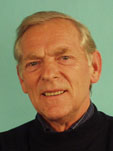 |
The Leiden Group is a major player in the design and synthesis of molecules of biological importance. Recent work in nucleic acid chemistry has been directed towards the development of antisense probes based on PNA (Polyamide Nucleic Acid). For example, PNA.DNA chimerae, prepared by automated solid phase synthesis, inhibit the translation of the luciferase gene in an RNase H assisted process. The high-affinity hybridization and RNase activity of these and newly designed PNA-DNA chimerae are being explored to inhibit the translation of other specific genes. Preliminary studies led to the development of an artificial nuclease conjugated to PNA.
Bern
|
Contact: Prof. Christian Leumann Department of Chemistry and Biochemistry Tel: +41-31-631 4355 FAX: +41-31-631 3422 e-mail: leumann@ioc.unibe.ch |
 |
The Bern group is primarily
interested in the supramolecular chemistry of DNA and RNA. In
the last couple of years progress has been made in three main
areas:
Design, Synthesis and evaluation of the base-pairing characteristics
of oligonucleotide analogs with conformationally restricted phosphodiester-backbones.
Design of a new base to enhance triple-helix stability in the
parallel (pyrimidine-purine-pyrimidine) binding motif.
C-H...O hydrogen-bond assisted base-base recognition in triple
helical DNA.
For more details go to the group's Web site (see below).
Stockholm
|
Contacts: Professor Roger Strömberg or Dr. Esther Yeheskiely Division of Organic and Bioorganic Chemistry, Tel: +46-8-7287749 FAX: +46-8-311052 e-mail: Roger.Stromberg@mbb.ki.se |
 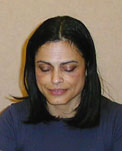 |
The Karolinska group is expert in synthetic nucleic acid chemistry and has developed new methods and strategies for the synthesis of DNA and RNA fragments, as well as of modified oligonucleotides, which are widely used in the academic and commercial worlds. Major recent contributions have been to the synthesis of nucleopeptides and peptide nucleic acids (PNA). The group also has experience in studies of reaction mechanism and catalysis of cleavage of phosphate esters in model systems and of enzyme catalysed reactions.











